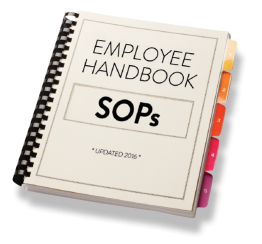Set standards, improve results
One of the critical differentiators in commodity agriculture is efficiency. As more of agriculture moves toward coordinated supply chains, consistency, documentation and verification will become increasingly important. For example, Walmart now insists that its suppliers don’t use child labour or excess fertilizer and it wants more than promises to verify compliance. In the 1990s, livestock industry leaders also adopted standard operating procedures (SOPs) to ensure uniform products and avoid damaging consequences such as inadvertent drug residues in the bulk milk tank.

Now I see superior grain operators integrating SOPs into employee handbooks on agronomic practices. One Midwest U.S. farm issues supervisors three type-written pages of guidelines on equipment operation and safety issues when spraying. For example, it gives detailed safety tips when employees transport sprayers on the road: “The large boom when folded for transport will cause numerous blind spots when crossing intersections, four-ways, etc. Always try to get over and let people around as you can only go about 30 mph. Try avoid going long distances with product in the sprayer tank. You don’t want to be leaking chemical somewhere on the road.”
One large South Dakota operation also developed SOPs for their marketing plan: “Whenever futures markets cover break- even costs at 80 percent of historic yield, the farm has standing orders with a broker to use options to establish a price floor.” That’s not giving up the top of the market, the farmer says, because he still has the remaining 20 percent production to boost his profit. He credits SOPs with instilling financial discipline in his operation.
Before I dive into how to establish farm-based SOPs, I would be remiss if I didn’t acknowledge two people from whom I have learned a great deal about process improvement — Idaho farmer-consultant Dick Wittman, who is a member of the TEPAP (The Executive Program for Agricultural Producers) faculty, and Dave Grusemeyer of Cornell’s PRO-DAIRY program.
Six Sigma and TQM (Total Quality Management) are two well-known management programs designed to help companies maintain process and quality control. There are numerous others — HACCP, GAP, Balanced Scorecarding and Lean Manufacturing — with some of the same objectives.
Two things common to all these programs are processing mapping and the development of standard operating procedures (SOPs). Process mapping involves laying out the steps and the order (sometimes simultaneous) in which actions have to be carried out to complete a process, such as planting and spraying. SOPs describe the details, the steps, the standards and the order in which activities are to be performed in order for the process to be carried out consistently and efficiently. Essentially, SOPs are a description of the links in the chain that make up the process.
Benefits of SOPs
They can aid in training a new hire or a person taking on a new position by providing a reference to make sure they know what, how and when things are to be done. Often there are so many things an employee is responsible for that telling, explaining or showing can lead to information overload unless there are written step-by-step instructions the employee can refer back to as they start doing the work until they have enough experience to internalize them.
- They can serve as a reference for employees filling in on jobs they don’t do on a regular basis.
- They help reduce system variability by increasing consistency.
- They can encourage more employee buy-in and a sense of ownership by involving experienced employees in writing the SOPs to make sure the final product is more complete and understandable.
- They can be used in performance evaluations by providing an understanding of what needs to be done and a set of standards against which to assess performance. Having a control system in place that monitors performance also aids in documenting performance. The current technology that facilitates this process is often already in place or under development.
- They can help improve safety and reduce environmental
risk as well as provide the basis for documentation and verification as traceability and verification requirements become
more prevalent. - Employees can coach and support each other if there is documentation available on exactly how different tasks are to be done and everyone knows what their co-workers are supposed to be doing. This can also help generate more of a team approach, including peer pressure, to make sure tasks are done correctly.
- Development of a complete set of SOPs is time consuming. It is critical that employees understand why they are important, and are involved in their development. Management has to be supportive and committed. Prioritizing where SOPs are most needed and have potential for the most economic impact and the likelihood to produce quick successes can also generate more support and reduce frustration. It is important that the right individual is selected to lead the development effort for each SOP.
Continuous improvement
Many producers feel that this approach may work for a controlled factory environment but is not suited for much of farming because of the many uncontrollable biological and environmental factors involved. But too many of the best-managed farms use this approach for it to be dismissed. A farm is basically a biological manufacturing plant and — with the drive to becoming more efficient, reducing variability and documenting the actions being taken — this approach is becoming increasingly important. In some instances, it is or soon will be required for market access.
The one big thing that I believe is being overlooked, even by those using this management approach, is the need to incentivize continuous improvement. This may be through eliminating or combining steps to improve the process, increase output and reduce inputs or time. SOPs have the risk of dumbing down the system if not reviewed and improved on a continuous basis.
I know of one instance in my own family where my son-in-law came up with software improvements that saved his company $400,000 the first year and each year thereafter. Two weeks after the approach was implemented, he received a $25,000 bonus. The cost was minimal compared to the impact, but it made a definite positive impression and encouraged him to keep looking for and thinking about other opportunities. Without this approach, it is too easy for SOPs to create a situation that resembles a government bureaucracy or a union mentality of just meeting the standards rather than continuously raising the bar.
It is an economic reality that success and survival require continuous management improvement at a rate set by the competition and not by your own comfort zone.
This article was originally published by DTN and is reprinted with permission.





